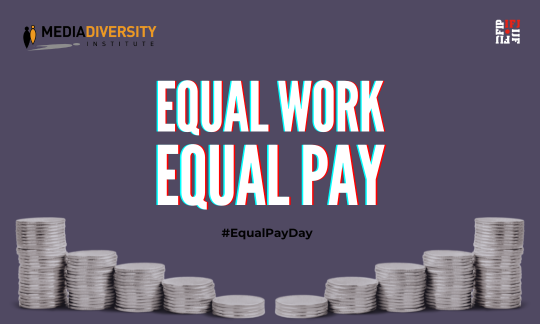In an era where journalism plays a crucial role in upholding democracy and advocating for equality and the public’s right to know, women journalists around the world face a troubling reality: Despite representing a significant portion of the journalism workforce, they are consistently paid less than their male counterparts. This inequality undermines not only the rights of women in the workforce but also the credibility and ethical standards of the profession at large.
A multitude of studies, including reports from industry watchdogs, labour organisations and academic institutions, reveal that the gender pay gap in journalism spans across all continents, media organisations, and beats.
In Brazil, women journalists employed under a work contract earn on average 5.7% less than men for the same work. This difference increases the higher the position. In the case of editors-in-chief, for example, women earn 41.3% less than men in this position. The figures come from a survey commissioned by FENAJ.In the UK the BBC 2023gender pay gap report revealed an increase, taking the gap to its highest level since 2018. In France a study conducted from 2010 until 2021 revealed that more women are hired for short term contracts (18% while 10% for men). And, further away in Australia, a publication dated 2024 revealed “the base salary pay gap across the media and advertising landscape is 14.5% between men and women, while the gap leaped to 19% once those executive bonuses and the like were thrown into the equation”. Across sectors in the European Union "in 2022, women's gross hourly earnings were on average 12.7% below those of men”.
The global figure is estimated at 20%, according to the ILO 2023 Global report. This means that women earn on average 80% of what men earn. At the current rate, it will take at least until 2086 to achieve wage equality worldwide, according to estimates by the International Labour Organisation (ILO).
In journalism, one of the reasons for this pay disparity is the poor presence of women in senior highly-paid positions. A Reuters Institute 2024 survey revealed that the percentage of women in top editorial positions “varies significantlyfrom market to market, from 0% in Japan to 43% in the US.”Glass ceilings continue to limit their access to executive roles, editorial leadership, and management. Many women are funneled into lower-paying sectors of journalism, such as lifestyle or culture reporting, while men dominate higher-paid fields like politics, business, or investigative reporting.
Another important factor is that women journalists are more likely to take on freelance or part-time roles in an effort to balance caregiving responsibilities, where pay is often inconsistent, time and travel expenses for investigative and editorial work not remunerated,benefits are scarce, and job security is limited, not mentioning digital safety and means of getting support from media employers.
The pay gap is even more pronounced for women of colour, LGBTQ+ individuals, and those from marginalised communities, who face multiple layers of discrimination.
To eradicate the gender pay gap in journalism, the IFJ and MDI recommend to:
- conduct audits in all media organisations to assess the gender pay gap
- introduce mandatory pay transparency policies in media companies
- adopt Equitable Advancement Opportunities that support women into leading roles and ensure that they are equally represented in decision-making positions
- adopt non-discrimination policies and collective agreements to eliminate bias, harassment and violence at work and ensure a safe working place
- set fair pay policies for freelancers, including fair wages, benefits, and job security
“By addressing the gender pay gap in journalism, we not only create a more just and equitable profession, but we also ensure that the stories shaping our world are told by diverse voices, empowered and fairly compensated for their contributions. The fight for gender pay equity in journalism is a fight for fairness, transparency, and dignity in the industry and society at large. Trade unions have a strong role to play in pushing for solid collective agreement and policies to support fair pay,” said IFJ Gender Council Chair Maria Angeles Samperio.
"The pay gap in the media industry tends to be more pronounced for people from marginalised and diverse communities, limiting their role in media production. This must end now as it contributes to different perspectives, biased narratives and the reinforcement of stereotypical stories that shape public perceptions and influence attitudes. In an increasingly polarised world, we call on governments to promote equal pay for all and to reduce the inequalities that fuel divisions in society,” said Media Diversity Institute Executive Director Milica Pesic.

